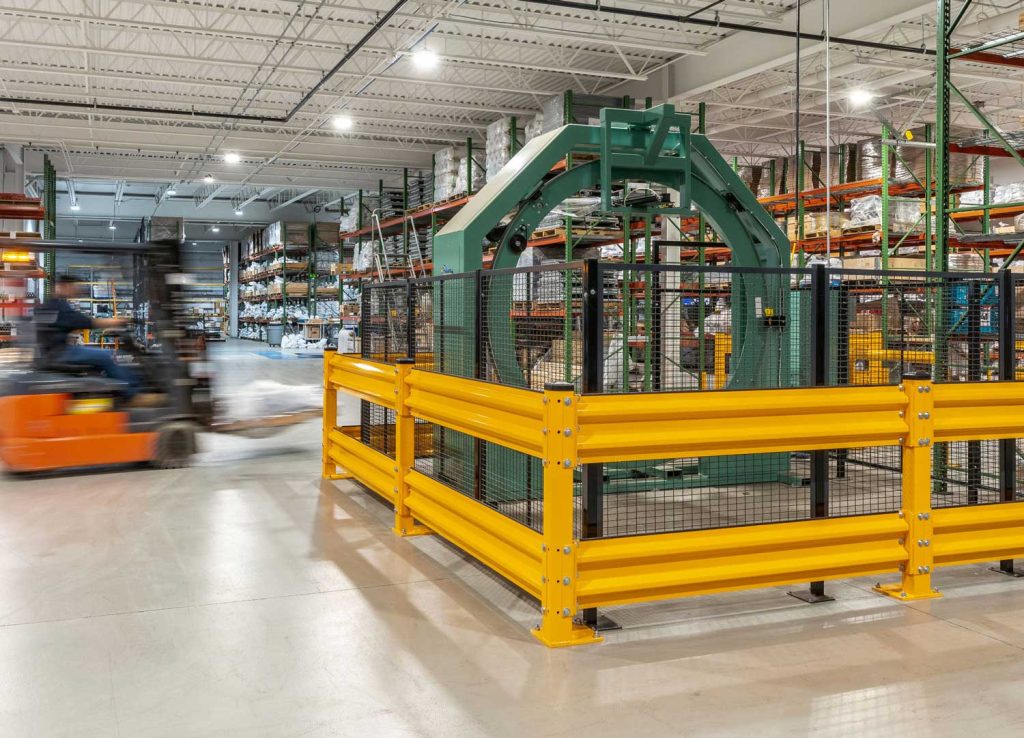Industrial Safety Blog

The Psychology of Safety Colors
What do you think of when you see the color yellow(Safety Color)?
For most people, it radiates feelings of warmth, joy, optimism, confidence, inspiration, and positive energy. As a long-wavelength color — the brightest on the visible spectrum — yellow is also the most noticeable shade to the human eye, known to stimulate mental activity and awareness.
The psychology of color:
The psychology of color is a fascinating field, deeply rooted in brain activity and inherent human nature. Yellow, for example, has been shown to activate certain mental processes, stimulate the nervous system, and even trigger memories. It also encourages communication and analytical thinking.
Because it is the brightest color to the human eye, yellow is frequently used for warning signs or to designate areas in which caution should be taken. As a manufacturer of industrial safety products for 30 years, OMEGA Industrial Products took a look at some of the major colors involved in the making of our products.
The colors can vary as much as the spectrum and different federal agencies prescribe different colors for different safety designations.
Yellow:
Purpose: Yellow should be the basic color for designating caution and marking physical hazards. (OHSA)
Yellow is the most easily noticeable color and is used to mark attention-grabbing safety precautions such as pedestrian crossings, yield signs, and the “slow” signal at three-color traffic lights.
Yellow is also used within the industrial space; construction vehicles, hard hats, caution tape, safety vests, and cones are often manufactured in shades of bright yellow to quickly catch passersby or workers’ attention and heighten safety awareness.
Yellow is meant to highlight instruction and warnings. While OSHA does not designate a color for handrails or guard rails, it is a general industrial practice to paint them yellow — a color that stands out within facilities and outdoor areas.
Green:
Purpose: Green should indicate safety-related instructions, procedures or the locations of safety equipment. (ANSI)
In the early days of railroads in the nineteenth century, white light was used as the indicator for “go,” green was for “caution,” and red was for “stop.” However, after a missing red lens caused an accident after a train failed to halt, green became the signal for “go” and yellow was selected as the new “caution” color, as it was distinct from the other two hues.
Today, the color green is often associated with safety and is used to direct people. Because it is not as “intrusive” as the color red or yellow, it has the ability to blend in while still being recognizable. In industrial facilities, green is often used to designate safe areas and first-aid equipment.
Red:
Purpose: Red should identify fire protection equipment, danger signs, containers of flammable liquids, and “STOP” buttons or switches. (OSHA)
Red attracts attention because of its urgency; it usually signifies danger or “stop.” OSHA recommends using red to identify fire protection equipment, fire alarms, exits, stop signals, machinery stop switches and sprinkler pipes. The American National Standards Institute (ANSI) designates red as the color to be used for sprinkler systems and fire protection materials.
Available Paint Colors at OMEGA:
As a leading supplier of safety products and barriers, OMEGA uses “Traffic Safety Yellow” in each of our products to ensure that all of your industrial workplace safety standards are met and workers are kept safe. Custom Colors are available for an additional fee. From rack and pipe guards, rails, and cable shields to stairways, pipe bollards, and floor angles, we offer a variety of products that can be easily customized to meet your specific needs.



